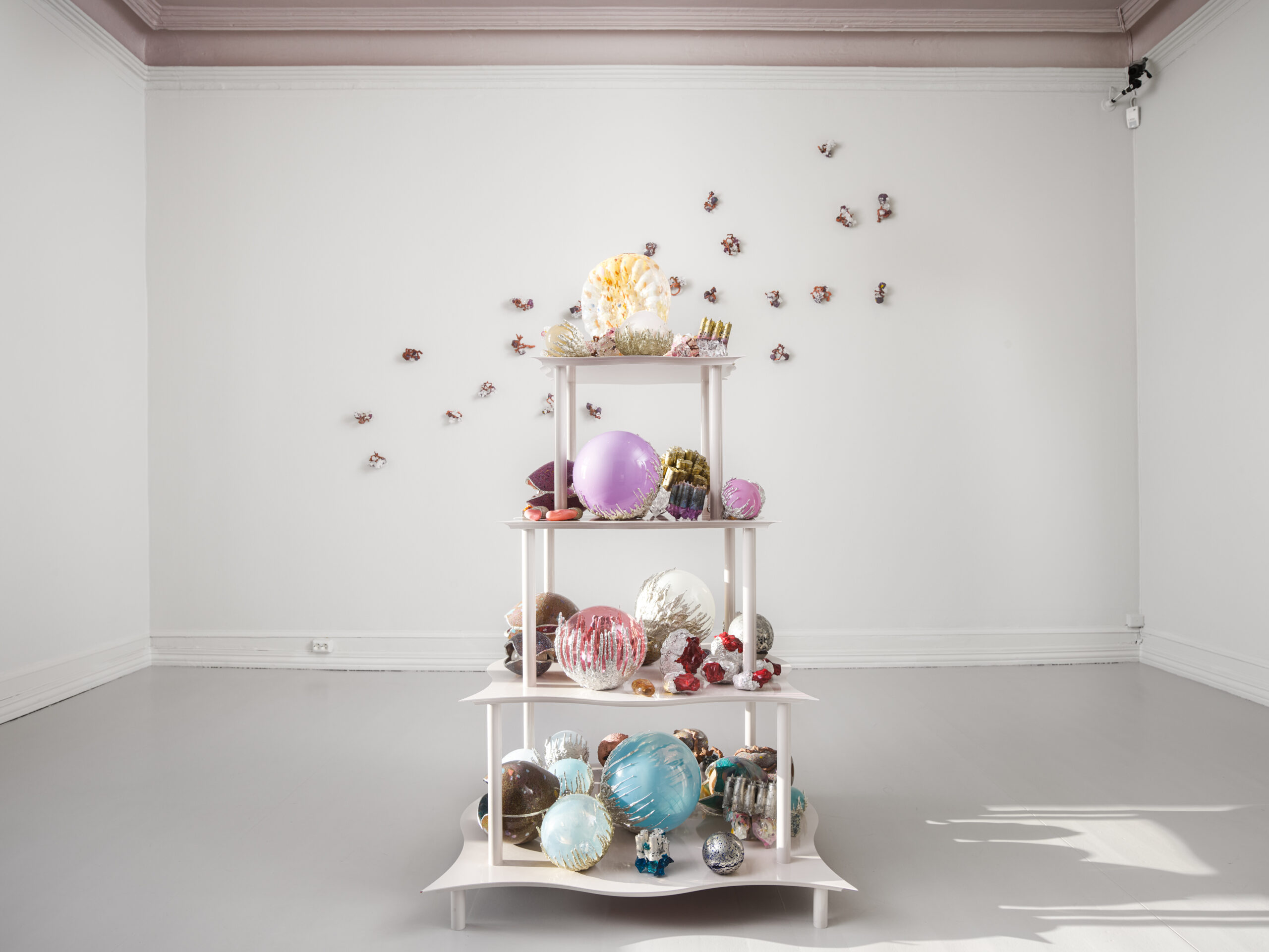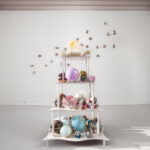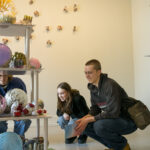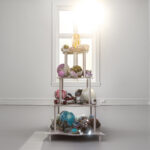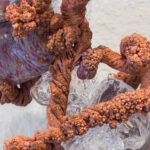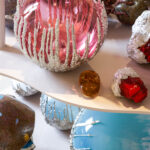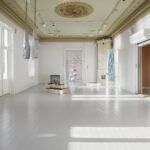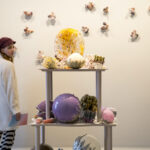The word amass denotes an accumulated collection. The Amass grows out collections, it is a collection of collections. What was once singular objects without a worth or a place in society can find its place in the Amass. Leftovers and scrap; an old tin can, electric cables and glass the have all been Amassed. The materials individual properties are simultaneously disguised and emphasized in the Amass. It is the result of a forced metamorphosis where what used to exist ceases to be, and something new assumes. The Amass insofar, is a process of becoming.
The Amass is made up by nature and culture, it is a given fact and it is a construct. Two seemingly opposing states of being coming together in a semiotic dynamic action: being collected is being made.
When the Amass is formed it draws on connotations from the treasures of a wunderkammer. It is made up from more than matter. Beliefs and mysticism are central components. While seemingly stable as a whole, the Amass can be overwhelming in its plurality. It speaks both truth and lie, but always with a tone of authority. Artificial fossils and naturalia, objects that tickle the human nerve that is drawn to lustrous materials and the human obsession of searching the earth for treasures and raw materials for our endless consumption.
The Amass is not without a master, it serves the collector. Its purpose is to be accumulated, arranged and owned, its beauty and power reflects on the master. The objects in the Amass testify that whatever they say about nature or society, the collector already knows it. She can hold it in the palm of her hand, she can put it on a shelf. When displayed and gazed upon, it is her wisdom and power we see.
The Amass is a part of the exhibition Abundance.
Gallery F 15 presents, in collaboration with Ki Nurmenniemi, Helsinki-based art curator, art writer and doctoral researcher in interdisciplinary sustainability science,
The 45th Tendencies Biennial embraces abundance, a way of perceiving the world that cherishes the plurality of lifeforms, relationships, and stories. Abundance is both a conceptual framework for sparking cultural change and an aesthetic approach that celebrates layeredness and boasts all the colours of the rainbow. The broader cultural context for the exhibition is the need to reshape values in the era of climate breakdown and ecological collapses. True sustainability cannot be achieved through preservation only; it also calls for transformations and the mindful reinvention of traditions.
Abundance features newly created artworks by 14 artists living and working across the Nordic countries and the Sápmi region. Through varied conceptual starting points and a broad range of materials and techniques, their artworks make tangible the invisible natural phenomena and delicate co-dependencies that weave the webs of life on our planet. Many of the featured artistic approaches reach beyond westernized aesthetic conventions and ways of understanding. The overarching question that the exhibition addresses is How do contemporary art and crafts practices converge to create more meaningful, livable and lovable worlds?
The artists taking part in this edition of Tendenser are:
Lene Baadsvig Ørmen (Norway) Ask Bjørlo (Norway) Hanne Friis (Norway) Ellen Grieg (Norway) Sasha Huber (Finland/Switzerland) Kristin Larsson (Sweden) Kim Laybourn (Norway/Denmark) Germain Ngoma (Norway) Outi Pieski, Biret & Gáddjá Haarla Pieski (Sápmi) Pearla Pigao (Norway) Elsa Salonen (Germany/Finland) Anna Ting Möller (China/Sweden) Anna Rún Tryggvadóttir (Iceland) Man Yau (Finland)
